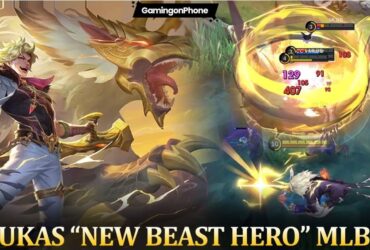The League of Legends TCG, known as Project K, has just been revealed in full – but how do you play it? The new physical card game based on the hugely popular MOBA is coming in 2025, and we recently got our first proper look at it. Of course, that’s led to plenty of questions about how it actually works when you sit down at the table, so game director Dave Guskin from Riot Games has taken the initiative with a full introduction to the game’s rule set.
The first reveal of the League of Legends Trading Card Game came just last week, and we’ve all been eagerly trying to figure out exactly how it will work. The card game brings the beloved world of Runeterra to a physical form that draws inspiration from the likes of Magic the Gathering and Hearthstone. Whether you’re a huge fan of the MOBA, have recently been enraptured by Arcane season two, or are simply a dedicated TCG enjoyer, it’s looking like a very promising addition to our collections.

So how does it work? “Oh hey,” Guskin writes in a new post shared via social media, “we heard some of you wanted the gameplay rules for Project K. Say no more!” He shares a brief but daily in-depth rundown of the core systems and how turns play out. Matches feature two to four players. Decks are 40 cards in size, and must be built from the colors of your chosen Champion Legend. You’ll get one Champion unit that matches the name and one of the colors of your Legend, while your remaining cards are capped at three copies each.
Additionally, your deck will include three battlefields, which are colorless (meaning you can take any of them to your liking). In a one-off match, each player will select one at random. When playing a best-of-three, you’ll pick one at the start of each game, but can’t use any of them more than once. The chosen battlefields are then shuffled and one is chosen at random, determining the starting player. If your game includes four players, that battlefield is then removed, meaning you’ll only use the remaining three.
To start, players shuffle their Main Deck and Rune Deck, then draw four cards from the Main Deck. You may mulligan one time by choosing up to two cards from your starting hand, placing them on the bottom of your deck, and drawing to replace them. On your turn, you draw one card from your Main Deck (unless you’re the first to go in a four-player match). You then play two runes from your Rune Deck, which are ready to use immediately – the last player to go also plays an extra Rune on their first turn.
On your turn, you can play units from your hand, spells, gear, or deploy your Champion from the Champion Zone. Playing a card requires using Runes – sometimes you’ll just ‘exhaust’ them by turning them sideways, meaning they’re spent for the turn, but you may also need to ‘recycle’ Runes, placing them on the bottom of your deck (this can include exhausted Runes). Units must be played onto your base or a battlefield you control, and come into play exhausted for the first turn, similar to summoning sickness in games such as Magic.
The goal of the game is to take and hold the battlefields. Moving a unit to a battlefield or back to base exhausts it, and they can only move directly between battlefields if they have the Ganking ability. If you move to a battlefield that is uncontrolled, you claim it. If an enemy is there, combat begins, with defenders taking their actions before attackers. Spells can also be played, and you can place one card with the Hidden ability on a battlefield you control, much like a Hearthstone Secret or a Yu-Gi-Oh Trap card, using it when a fight breaks out.
If the attacking player successfully eliminates the defenders, they take control of the battlefield, scoring it. If the defenders survive, they remain and the living attackers must go back to base. Units that don’t die are returned to full health when a battle ends. You can only score each battlefield once per turn, and the first player to eight points wins. The winning point can’t come from just a conquer – you must either get it from a hold, or by scoring all battlefields in a single turn. If you conquer but don’t achieve this, you may instead draw a card in place of that point.
Guskin also gives a glimpse at four pre-built Champion decks that players can test at the ongoing TFT Macao event. Jinx is a Fury/Chaos Champion that likes to conquer and discard for bonus effects. Viktor is Mental/Order, with an endless army of recruits making him great at holding. Yasuo is Calm/Chaos, using tricky tactics to slip between battlefields for quick conquers that outmaneuver his foes. Volibear is Fury/Physical and loves to build up to expensive, powerful creatures capable of dominating the battlefield entirely.
The League of Legends Trading Card Game is set to launch in 2025. Taking on the TCG world is certainly a tough task, but if anyone can pull it off, it’s Riot. The battlefield system certainly has me intrigued – it brings to mind a rather different board game I love called Shadow Hunters, and promises to put a distinctive spin on strategy.
For now, you can take on Summoner’s Rift with our LoL tier list. Make sure you look as stylish as possible with the latest LoL skins on sale, too.
You can also follow us on Google News for daily PC games news, reviews, and guides, or grab our PCGN deals tracker to net yourself some bargains













Leave a Reply